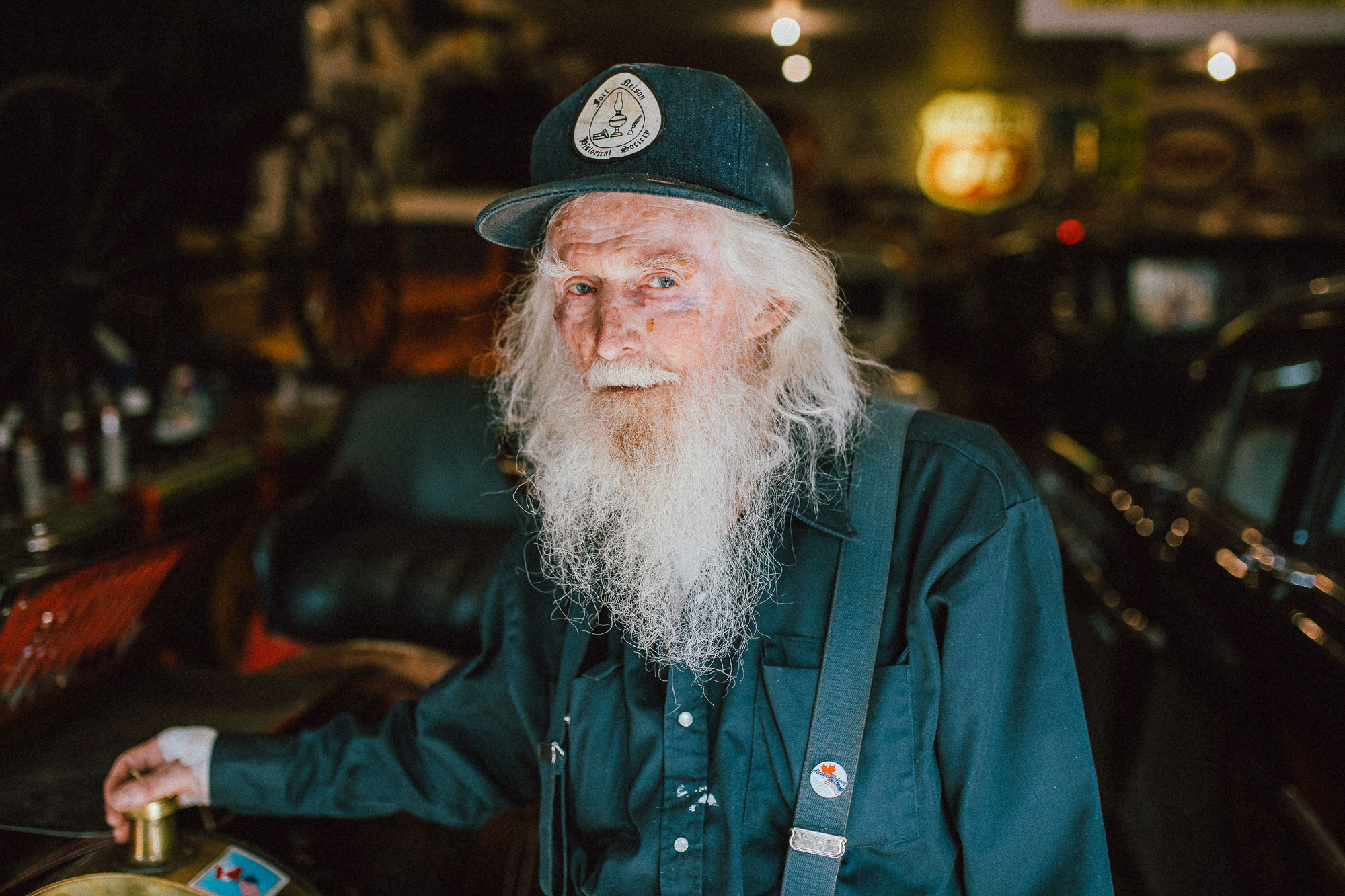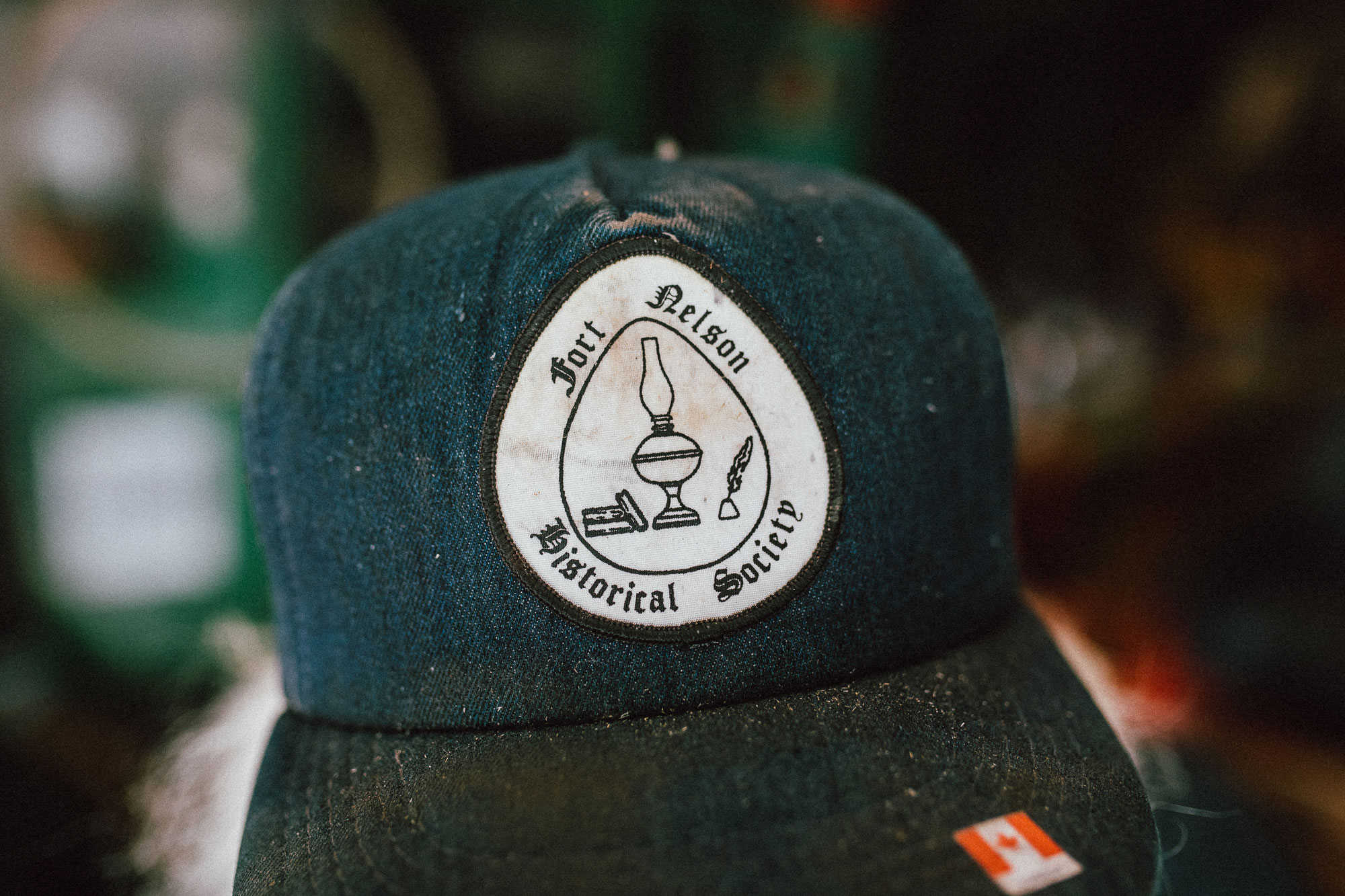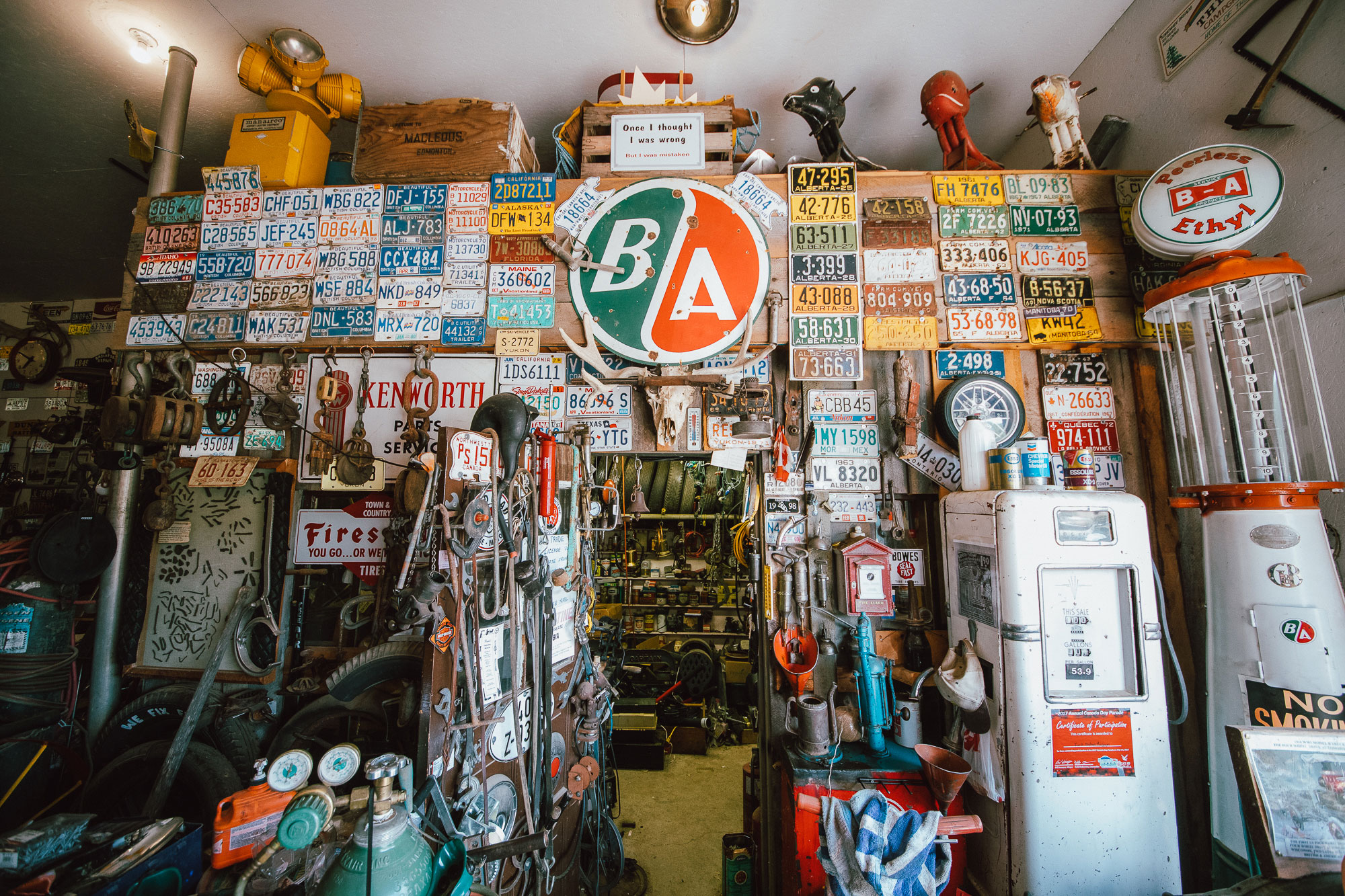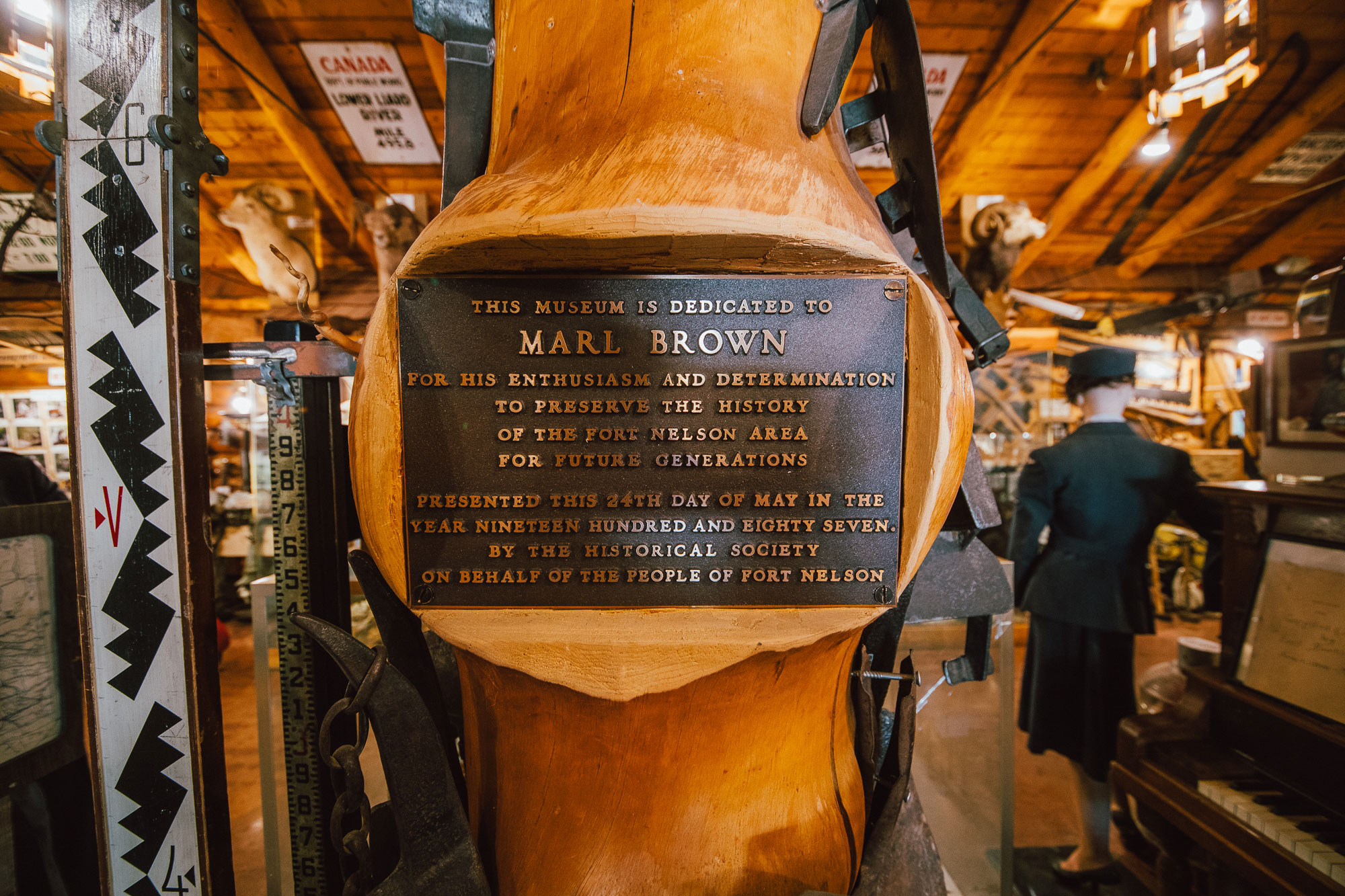The Fort Nelson Heritage Museum is bigger than you probably imagine. It contains a sprawling collection of artifacts and memorabilia set up in a group of restored buildings and outside exhibits. It documents the history of Fort Nelson and the Alaska Highway in newspaper clippings, building tools, old photographs, restored vehicles and anything else you can think of. The museum opened its doors in 1987 and has only grown in size and fame since then. Throughout its existence, its driving force has been Marl Brown.
He was sitting outside the car exhibit wearing blue work pants and suspenders, and a hat with ‘Fort Nelson Heritage Society’ embroidered on it. I talked with him about history, the museum, and his dislike for modern vehicles.
“My wife and I moved up here from Alberta in 1957,” he began. “I come up and I worked for the Canadian army as a mechanic. We were fifty-five miles south of Fort Nelson. There used to be a maintenance camp every fifty miles, and there was five families at our maintenance camp. In the camp there was a foreman, three operators and a mechanic. I was a mechanic. I worked for them for thirty years, then we built our own service station and ran that for fifteen years. Then they decided to change the Alaska Highway, shorten it up, different route. So they left us eight miles back in the bush. So we had no other choice but to come to town.”
He worked in a few different mechanic and engineer jobs in Fort Nelson for about 25 years. But in the meantime, he said, “I was gathering stuff, and had a museum on my mind. So we formed a historical society and started gathering stuff and building and here we are, thirty years later.”
I asked him what was it about history or about these artifacts that made him feel like they were worth preserving. “You get talking,” he answered. “I just seen so much being destroyed, thrown away, taken to the dump; I thought somebody better start hanging onto it. Show people what it was like.” He thought for a while. “I just, you just can’t stand to see it thrown away. A lot of people have no idea what was here and what people had to go through.”
One of the most powerful things about the Fort Nelson Heritage Museum was that it made local history tangible. It wasn’t lines in a book or photos on a signboard; it was real belongings. Rusted and scratched, used and worn. It put history under your fingertips.


Proposals for a highway connecting Alaska to the contiguous United States began in the 1920s and continued through the Great Depression, but until World War II the Canadian government didn’t see enough justification for the massive cost of construction. After the 1941 attack on Pearl Harbour and the beginning of the Pacific Theatre, however, both American and Canadian officials agreed a highway needed to be built to defend the Alaska coast and Aleutian Islands. Construction began in March and the rough built-as-fast-as-possible highway was completed in November.
“Once the highway went through, everything changed,” Marl told me. “I mean, before that it was dog team, horses. When the highway come through, it changed the whole province. From trappers to oil patch, lumber mills.” He explained that Fort Nelson itself started beside the river but when the highway came through, people started moving towards where the town is now, along the highway.
“Right now we’re in a sort of a slump. But it’ll come back. We’ve had slumps before and then it comes back. Right now we only have one plywood sawmill. Before that we had a plywood mill, an OSB mill, we even had a chopstick factory. All that’s gone. It might come back, who knows. And the oil patch too is sort of in a slump.” He paused, then added, “Hope for the best.”

One of Marl’s favourite recollections was the story of him—along with a friend and his wife—driving a 1908 McLaughlin Buick from Fort Nelson to Whitehorse and back for its 100th anniversary. He had spent two winters restoring it, then decided to “do something for its birthday.” The car experienced no mechanical issues on the Alaska Highway, he told me with fondness. “Although, you know, the roof leaked a little.” I looked. The Buick Model 10 doesn’t have a roof.
This trip is just one of many examples of his love for old cars and their durability. “It’s a throw-away society now. I don’t know how long this will last when I’m gone, but I’ve been trying.”
I asked him if he had any ideas on how to change that culture of planned obsolescence, disposability and consumerism. He didn’t say anything for a long time. “No,” he said finally. “Not really. The only thing, really. Hard times. If you got hard times, it might change. I mean people just never threw anything away before, in the twenties in the teens. That buggy was new in 1888 but still good, and you could use it. I’d like to see a vehicle of today last that long. It wouldn’t happen.”


The museum is a testament to things that last—cars with wooden frames, kitchen appliances with metal handles—and Marl, in his soft-spoken, humble dedication to preserving their histories, is their guardian. He loves old cars from a mechanic standpoint, but in talking to him I got a feeling that he believes intrinsically that the past is worth hanging onto. Without these artifacts, we lose a tangible access point to the way things used to be—good and bad.
It’s worth knowing about the construction of the Alaska Highway. It’s worth knowing about vehicles built before the modern auto industry. By maintaining our knowledge of history we can see how culture has changed, and how we want it to change in the future.
In the words of Marl: “Hang tough. Keep gathering.”